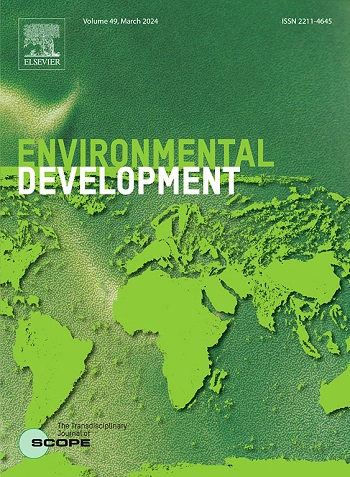How do different types of urban parks yield varied cooling effects? Decoding the contributing factors with Catboost-Shap analysis
IF 5.3
2区 环境科学与生态学
Q2 ENVIRONMENTAL SCIENCES
引用次数: 0
Abstract
Purpose
Urban parks play a crucial role in mitigating the urban heat island effect and improving the quality of life for city residents. However, the land available for parks and green spaces is shrinking in high-density urban areas, making it essential to identify which types of parks are most effective in generating cooling effects.
Method
This study focused on 249 parks in the central urban area of Guangzhou, China, calculating several indicators to assess park cooling effectiveness. These include Park Cooling Intensity and Park Cooling Gradient from an accumulative perspective, as well as Park Cooling Area and Park Cooling Efficiency from a maximum perspective. These quantitative measures were used to evaluate the cooling effects of different types of urban parks. Through empirical research and a literature review, thirteen factors influencing park cooling were identified, and their significance was determined using the CatBoost binary classification model and the SHapley Additive exPlanations method from machine learning.
Results
Parks were classified as having a significant cooling effect only if their surrounding areas showed a detectable temperature reduction. The results showed that 217 of the 249 parks demonstrated a significant cooling effect, with an average PCI of 0.0317 ± 0.01, PCG of 1.03 ± 0.02, PCA of 4.36 ± 0.8 km2, and PCE of 12.35 ± 3.25. The excluded 32 parks displayed no discernible temperature decrease, indicating an absence of cooling island effects. Among all park types, community parks and amusement parks exhibited the strongest cooling effects, attributable to their consistently superior performance across PCI, PCG and PCE metrics, a direct reflection of enhanced thermal regulation capacity, followed by forest parks and specialized parks.
Conclusion
This research provides valuable insights for urban planning aimed at mitigating the UHI effect and enhancing resident comfort. It also offers quantitative references for improving and renovating parks in land-constrained cities.
不同类型的城市公园如何产生不同的降温效果?用catboost - shape分析解码影响因素
目的城市公园在缓解城市热岛效应、提高城市居民生活质量方面发挥着至关重要的作用。然而,在高密度的城市地区,可用于公园和绿地的土地正在减少,因此确定哪种类型的公园最有效地产生降温效果至关重要。方法以广州市中心城区249个公园为研究对象,计算公园降温效果评价指标。这包括从累积角度来看的园区冷却强度和园区冷却梯度,以及从最大角度来看的园区冷却面积和园区冷却效率。利用这些定量指标对不同类型城市公园的降温效果进行了评价。通过实证研究和文献综述,确定了13个影响园区降温的因素,并利用CatBoost二元分类模型和机器学习中的SHapley加性解释方法确定了它们的显著性。结果火花只有在其周围区域显示可检测到的温度降低时才被归类为具有显著的冷却效果。结果表明,249个公园中有217个公园的降温效果显著,平均PCI为0.0317±0.01,PCG为1.03±0.02,PCA为4.36±0.8 km2, PCE为12.35±3.25。被排除在外的32个公园没有显示出明显的温度下降,表明没有冷却岛效应。在所有类型的公园中,社区公园和游乐园表现出最强的降温效果,这是由于它们在PCI、PCG和PCE指标上的表现一直都很好,直接反映了它们增强的热调节能力,其次是森林公园和专业公园。结论本研究为缓解城市热岛效应和提高居民舒适度的城市规划提供了有价值的见解。为土地紧张型城市公园的改善和改造提供定量参考。
本文章由计算机程序翻译,如有差异,请以英文原文为准。
求助全文
约1分钟内获得全文
求助全文
来源期刊

Environmental Development
Social Sciences-Geography, Planning and Development
CiteScore
8.40
自引率
1.90%
发文量
62
审稿时长
74 days
期刊介绍:
Environmental Development provides a future oriented, pro-active, authoritative source of information and learning for researchers, postgraduate students, policymakers, and managers, and bridges the gap between fundamental research and the application in management and policy practices. It stimulates the exchange and coupling of traditional scientific knowledge on the environment, with the experiential knowledge among decision makers and other stakeholders and also connects natural sciences and social and behavioral sciences. Environmental Development includes and promotes scientific work from the non-western world, and also strengthens the collaboration between the developed and developing world. Further it links environmental research to broader issues of economic and social-cultural developments, and is intended to shorten the delays between research and publication, while ensuring thorough peer review. Environmental Development also creates a forum for transnational communication, discussion and global action.
Environmental Development is open to a broad range of disciplines and authors. The journal welcomes, in particular, contributions from a younger generation of researchers, and papers expanding the frontiers of environmental sciences, pointing at new directions and innovative answers.
All submissions to Environmental Development are reviewed using the general criteria of quality, originality, precision, importance of topic and insights, clarity of exposition, which are in keeping with the journal''s aims and scope.
 求助内容:
求助内容: 应助结果提醒方式:
应助结果提醒方式:


